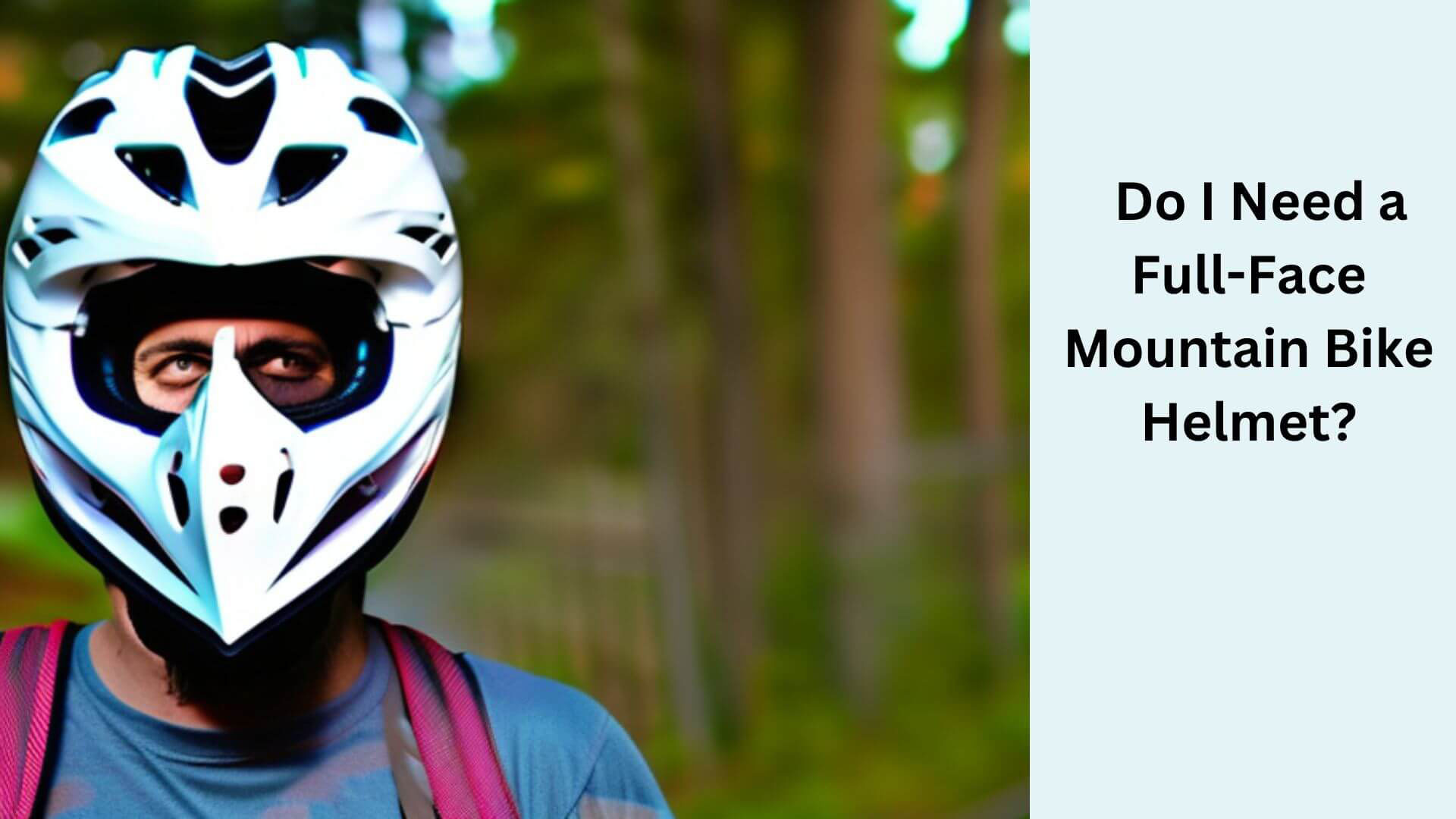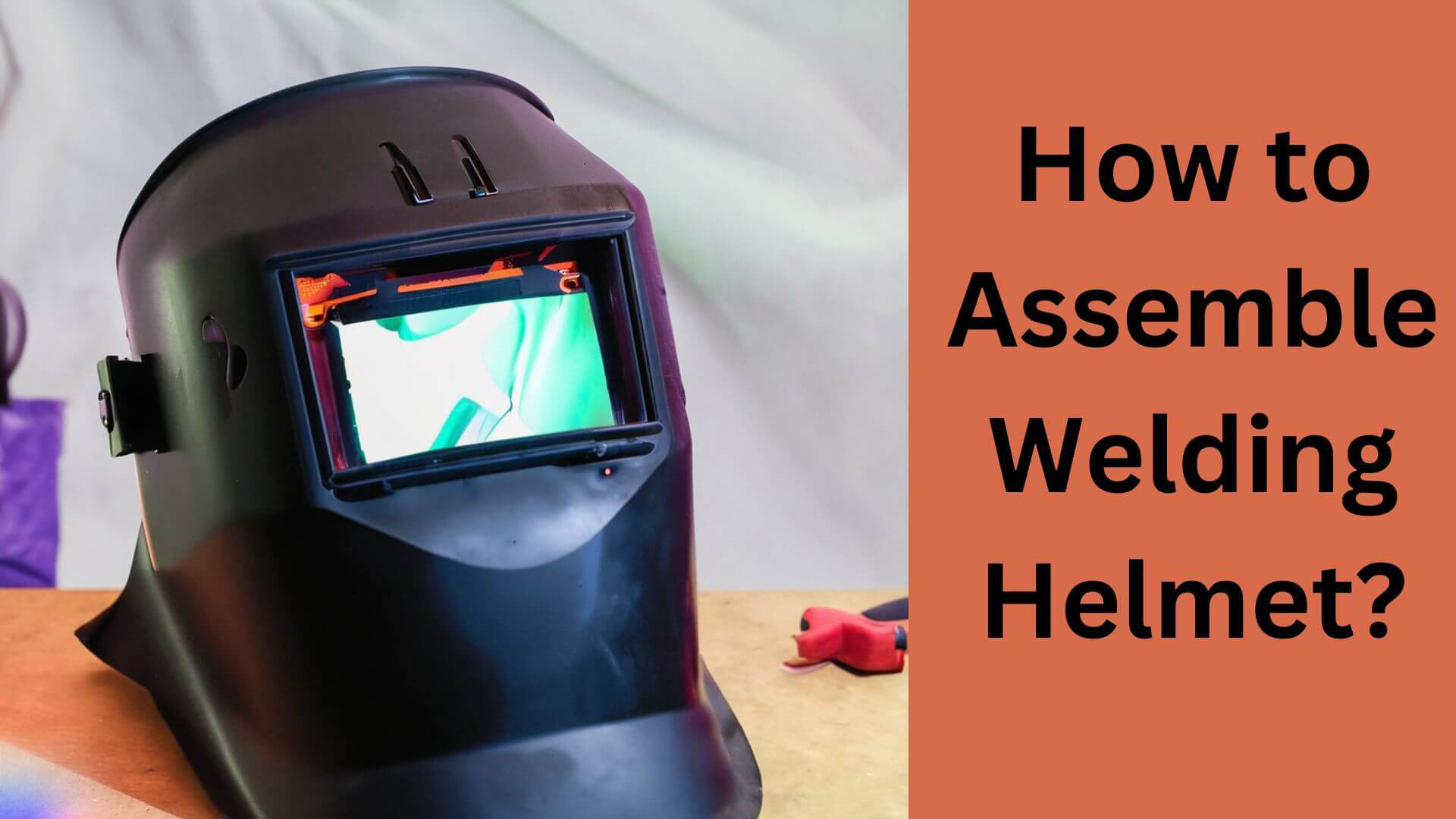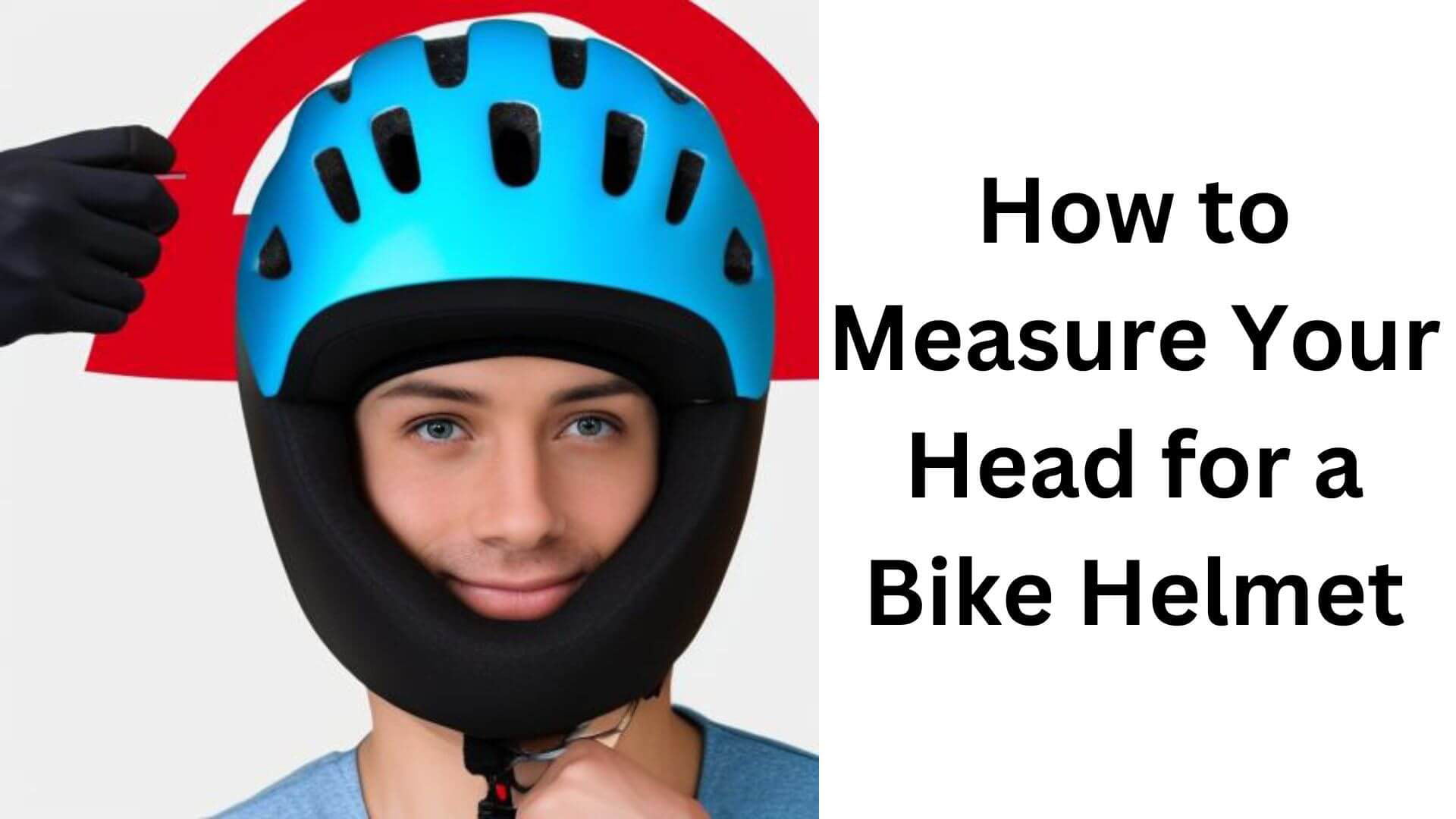Why Do Mountain Bike Helmets Have Visors?

When you hit the trails on your mountain bike, there’s nothing quite like the rush of adrenaline and the feeling of the wind on your face. But, as with any adventure sport, safety should always be a top priority.
That’s why you’ll often see mountain bikers sporting helmets with visors. But have you ever wondered why these visors are essential to a mountain biker’s gear?
In this article, I’ll dive into why mountain bike helmets have visors and how they help protect you while on the trails. So, grab your helmet, and let’s get started!
What is a Mountain Bike Helmet Visor?

A visor is a shield-like extension attached to the front of a mountain bike helmet. It’s made of plastic or other lightweight materials and can be easily removed or adjusted. Visors vary in shape and size depending on the helmet’s design and intended use.
Read More: Should I Wear a Full-Face Mountain Bike Helmet?
What Does the Visor on a Mountain Bike Helmet Do?
Mountain bike helmets have visors for one simple reason: safety. Most mountain bikers spend their time on narrow trails through the woods, encountering various obstacles and hazards such as branches, rocks, mud, sun, rain, snow, etc.
A visor helps protect their face and eyes from these elements and improves their vision and comfort while riding.
According to Mountainbike Expert, a visor can block glare from the sun and UV rays that damage your eyes, especially during sunrise and sunset.
It can also prevent raindrops or snowflakes from getting on your face and blurring your vision. Moreover, it can act as a shield against dirt and sand that can be kicked up by other riders or by your bike.
A visor can also reduce the risk of crashes by protecting your vision from trail debris, such as leafy branches.
Without a visor, you might have to move these obstacles out of the way with your hands or ride into them and hurt yourself. You can avoid these distractions with a visor and focus on your path.
Read More: Should I Replace Dented Mountain Bike Helmet?
What Types of Visors Are Available for Mountain Bike Helmets?
Several types of visors are available for mountain bike helmets, each with unique features and benefits. Here are some of the most common types such as:
1. Fixed Visors: These are fixed in place and cannot be adjusted. They are typically made from durable plastic and are designed to provide maximum protection from the sun, rain, and debris.
2. Adjustable Visors: These can be adjusted to different angles, allowing you to customize the shade and protection they provide. Most of the time, they are built of light materials like aluminum or carbon fiber.
3. Removable Visors: These can be easily detached from the helmet when unnecessary. Depending on the conditions, they are ideal for riders who want to ride with or without visions.
4. Integrated Visors: These visors are built directly into the helmet and cannot be removed. They are designed to provide maximum protection and are often found on high-end mountain bike helmets.
5. Magnetic Visors: These visors use magnets to attach to the helmet, making them easy to remove and replace. They are popular among riders who frequently switch between shaded and sunny areas while riding.
Overall, the type of visor you choose will depend on your preferences and the conditions you plan to ride.
Read More: Is Using a Mountain Bike Helmet for Road Biking Suitable?
How Do You Choose the Right Size and Style of Visor for Your Mountain Bike Helmet?
Choosing the right size and style of visor for your mountain bike helmet is essential to ensure maximum protection and comfort while riding. Here are some factors to consider when choosing a visor:
1. Compatibility: Ensure the visor is compatible with your helmet model. Different helmets may have other attachment mechanisms, so choosing a visor designed to fit your helmet is essential.
2. Size: Visors come in different sizes, and choosing one that is the right size for your head and helmet is essential. A too-large or too-small visor can be uncomfortable and may not provide adequate protection.
3. Material: Visors are typically lightweight, durable plastic. Look for a visor that is made from a material that is resistant to impact and weathering.
4. Style: Visors come in different styles, including fixed, adjustable, removable, and integrated. Consider your riding style and the conditions you’ll be riding in to determine which type of visor is best for you.
5. Color: Visors come in different colors, affecting how much sunlight is blocked and how well you can see in other lighting conditions. Choose a color that provides the right shade and visibility for your needs.
Choosing the right size and style of visor for your mountain bike helmet is a personal preference, and you’ll need to consider your individual needs and riding style to make the best choice.
Read More: Unveiling the Lightest MTB Helmet: The Featherweight Champion
How Does a Visor Help to Protect Your Eyes While Mountain Biking?
A visor on a mountain bike helmet can help to protect your eyes in several ways.
- Firstly, it can shield your eyes from the sun, reducing glare and making it easier to see the trail ahead. This is particularly useful when riding in bright or sunny conditions.
- Secondly, a visor can help keep rain and other precipitation out of your eyes, improving visibility and preventing distractions.
- Finally, a visor can help deflect debris such as twigs, branches, and rocks, which could otherwise cause eye injury.
Overall, a visor on a mountain bike helmet is an essential piece of gear that can help to keep you safe and focused while riding.
Check Also: Find Your Ideal Women’s Mountain Bike Helmet from our Top 10 Selection.
Are Visors on Mountain Bike Helmets Adjustable, and How Do You Adjust They?

Yes, many visors on mountain bike helmets are adjustable, allowing you to customize the angle and position of the visor to your liking. Look for the adjustment mechanism near the helmet’s front to adjust the visor.
The most common adjustment mechanism is a set of screws or bolts that allow you to loosen or tighten the visor.
Use a screwdriver or hex key to adjust the screws or bolts until the visor is in the desired position.
Some helmets may also have a dial or slider system that allows you to adjust the visor with one hand while riding.
Adjusting your visor correctly ensures maximum protection and comfort while riding.
Ensure the visor is positioned to provide shade and protection from the sun but doesn’t obstruct your view of the trail.
You should also check that the visor is securely fastened to the helmet to prevent it from coming loose while riding.
Benefits of a Mountain Bike Helmet Visor
1. Protection from Sunlight and Rain
Mountain bike helmet visors protect from the sun’s harmful rays and can help reduce glare on bright days. They also protect the rider’s face and eyes from rain, mud, and debris, making it easier to see the trail.
2. Reduced Glare
Mountain bike helmet visors help reduce glare by blocking sunlight that might reflect off the rider’s face shield or glasses. This is especially helpful when riding on sunny days or through open areas.
3. Better Visibility
The visor’s shade enhances the rider’s visibility by reducing glare, allowing them to see more clearly, even in bright sunlight. It also shields the rider’s eyes from debris and other distractions on the trail.
4. Enhanced Aerodynamics
Mountain bike helmet visors reduce wind resistance, making the ride more comfortable and efficient. The visor’s shape and position help to deflect the wind from the rider’s face, reducing drag and increasing speed.
Are there any Cons to Having a Visor on a Mountain Bike Helmet?
While visors on mountain bike helmets offer several benefits, there are also some potential drawbacks. Here are some of the cons of having a visor on a mountain bike helmet:
1. Reduced Aerodynamics: A visor can increase wind resistance and drag, which may concern riders focused on speed and performance.
2. Limited Visibility: If the visor is positioned too low or too high, it can obstruct your view of the trail, potentially causing accidents or reducing your ability to react to obstacles.
3. Added Weight: Depending on the size and material of the visor, it can add additional weight to the helmet, which can be uncomfortable for some riders.
4. Interference with Goggles: If you wear goggles while riding, a visor may interfere with the fit and placement of the goggles, causing discomfort or reducing visibility.
5. Style Preference: Some riders simply prefer the look and feel of a helmet without a visor and may find adding a visor unappealing.
Overall, the benefits of having a visor on a mountain bike helmet typically outweigh the potential drawbacks. Still, it’s essential to consider your individual needs and preferences when choosing a helmet with or without a visor.
Are there any Safety Standards or Regulations Related to Visors on Mountain Bike Helmets?
Yes, there are safety standards and regulations related to visors on mountain bike helmets. In the United States, the Consumer Product Safety Commission (CPSC) sets safety standards for all bicycle helmets, including those with visors.
Helmets must meet specific impact resistance and penetration requirements to ensure adequate protection during a crash.
Additionally, some countries may have specific standards and regulations for visors on mountain bike helmets.
It’s essential to check the safety standards for your country or region when choosing a mountain bike helmet with a visor.
It’s also important to note that visors, such as sunglasses or goggles, should not be considered a replacement for proper eye protection. While projections can provide some protection from the sun and debris, they may not be adequate in all situations. It’s always recommended to wear appropriate eye protection in addition to a helmet with a visor.
How Can a Visor Enhance Your Overall Riding Experience on a Mountain Bike?

A visor on a mountain bike helmet can enhance your overall riding experience in several ways. Here are some of the benefits:
1. Sun Protection: A visor can provide shade and reduce glare, making it easier to see the trail and preventing eye strain from bright sunlight.
2. Rain Protection: A visor can help keep rain and other precipitation out of your eyes, improving visibility and preventing distractions.
3. Debris Protection: A visor can deflect debris such as branches, rocks, and insects, preventing them from hitting your face and eyes while riding.
4. Comfort: A visor can help to keep sweat and moisture out of your eyes, making your ride more comfortable and enjoyable.
5. Versatility: Depending on the type of visor, you can adjust it to different angles and positions, providing customized shade and protection based on the conditions of your ride.
A visor on a mountain bike helmet can enhance your overall riding experience by providing additional protection and comfort, allowing you to focus on the trail ahead and enjoy your ride to the fullest.
Are there any Tips for Maintaining and Caring for a Visor on a Mountain Bike Helmet?
Yes, there are several tips for maintaining and caring for a visor on a mountain bike helmet to ensure it remains in good condition and provides maximum protection. Here are some tips:
1. Clean Regularly: To prevent dirt and debris from building up on the visor, clean it regularly with a soft cloth, mild soap, or a specialized helmet cleaning solution.
2. Avoid Scratches: Avoid using abrasive materials or harsh chemicals when cleaning the visor, as these can scratch or damage the surface.
3. Store Properly: When not in use, store the helmet in a cool, dry place to prevent damage to the visor from extreme temperatures or exposure to sunlight.
4. Replace When Damaged: If the visor becomes cracked, scratched, or damaged in any way, it’s crucial to replace it to ensure it provides adequate protection.
5. Check for Loose Screws: Regularly check the screws or bolts that attach the visor to the helmet to ensure they are tight and secure.
Following these tips ensures your visor remains in good condition and provides maximum protection while riding.
FAQs About Why Do Mountain Bike Helmets Have Visors?
Do all mountain bike helmets have visors?
No, not all mountain bike helmets come with visors. Some models prioritize aerodynamics over visors, while others may have detachable or optional visors.
Can I wear sunglasses instead of a helmet visor?
While sunglasses can provide some protection against the sun and wind, they don’t offer the same protection as a helmet visor. Moreover, sunglasses can become dislodged or damaged during a fall, whereas a helmet visor is attached to the helmet.
Can I adjust the angle of my helmet visor?
Some helmet visors are adjustable, allowing riders to change the angle to their preference. However, fixed visors cannot be adjusted, so choosing the right helmet with a visor that suits your needs is essential.
Are helmet visors only for sunny days?
No, helmet visors are helpful in all weather conditions, protecting from the sun, rain, and wind. They also enhance visibility and reduce glare, making riding more comfortable and safe.
How do I clean my helmet visor?
Use mild soap, water solution, and a soft cloth or sponge to clean your helmet visor. Avoid using abrasive cleaners or materials that can damage the visor’s surface. Rinse with clean water and let the visor air dry before using it again.
Last Word
In conclusion, visors on mountain bike helmets are a crucial piece of gear that provides riders a range of benefits.
From sun and rain protection to debris deflection and increased comfort, a visor can enhance your overall riding experience and help keep you safe on the trail.
When choosing a helmet with a visor, it’s essential to consider the different types and styles available, as well as safety standards and regulations in your country or region.
Properly maintaining and caring for your visor ensures it remains in good condition and provides the necessary protection while riding.
So, whether you’re a casual rider or a seasoned pro, a mountain bike helmet with a visor is an essential gear to enhance your safety and enjoyment on the trail.

Hey, I’m Hrithik Hossain. I am the head of helmethacks.com, which specializes in safety helmets. I am looking to connect with anyone interested in purchasing a helmet or who has any questions about different types of helmets. I have over 8 years of experience as a helmet expert, and I can’t wait to help you find the perfect helmet for you. I can help you with any questions regarding helmets, from the best brands to fitting, style, and more! I really enjoy keeping people safe by ensuring they have the best protection possible.







